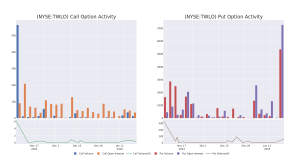SmartAsset and Yahoo Finance LLC may earn commission or revenue through links in the content below.
There is no age limit on Roth conversions, so you can transfer pre-tax savings into a Roth IRA regardless of your age or retirement status. As long as you have qualifying funds in a pre-tax portfolio, you can move them to an after-tax Roth account.
That doesn’t mean a conversion is always wise. For households in retirement, the benefits of a Roth conversion are often relatively minor compared with the costs of making this switch. For example, say that you’re 65, are taking Social Security and have $830,000 in your 401(k). Technically, you are perfectly free to do a Roth conversion. In practice, though, it may not do as much financial good as you expect.
A financial advisor can help you make important decision surrounding your retirement accounts, like whether to do a Roth conversion. Connect with a fiduciary advisor today.
A Roth conversion refers to the process of transferring funds from a qualifying pre-tax retirement account, like a 401(k) or traditional IRA, to a Roth IRA. There’s an important caveat: the transfer requires you to pay income taxes on the money that you convert.
When you contribute to a pre-tax account, like your 401(k), you receive a full tax deduction for the amount that’s invested. Then, in retirement, you pay income taxes on all withdrawals (both returns and principal). But when you contribute to a Roth IRA, you get no tax benefits on the amount that’s invested. In return, qualified withdrawals can be made completely tax-free. Roth accounts also aren’t subject to required minimum distributions (RMDs) since the money has already been taxed.
The main advantage of a Roth IRA is that your portfolio grows entirely tax-free. If you invest $1,000 and it grows to $10,000 you only pay taxes on the $1,000 before it goes into your account. With a pre-tax portfolio, on the other hand, you have more capital to invest in the first place. Every dollar on which you don’t pay taxes is a dollar that can grow over time.
Consider speaking with a financial advisor if you need help managing your retirement savings or deciding between pre-tax and Roth accounts.
When you make a Roth conversion, every dollar that’s converted is added to your taxable income for the year. For people under 59 ½ years old, you’ll need another source of liquidity to pay those taxes. However, if you’re 59 ½ or older, you can pay those taxes with money from your portfolio. Just keep in mind that this will reduce the value of your portfolio and its potential for long-term growth.

